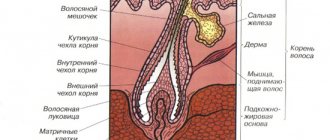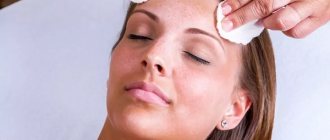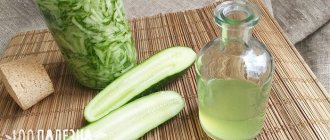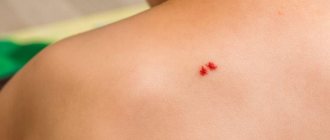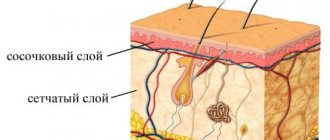Sebum (fat)
is an oily substance produced by the sebaceous glands. Sebum mixes with fat molecules called lipids to form a protective coating on the surface of the skin. Lipids moisturize the skin and protect it from harmful pathogens such as bacteria and fungi.
Sebum is produced by the sebaceous glands, which are located in the middle layers of the skin, near the hair follicles, and contains several types of fat molecules, or lipids. Human sebum is composed of 57.5% triglycerides and fatty acids, 26% wax esters, and 12% squalene, a lipid.
Sebum secretion
The face, scalp and chest have the highest concentration of sebaceous glands—each area of skin can have up to 900 of these glands per square centimeter. The sebaceous glands produce sebum through holocrine secretion, a process of programmed cell death. Cells called sebocytes dissolve and secrete sebum into the sebaceous glands.
Sebum passes through the follicular duct, which connects the sebaceous gland to the hair follicle. Growing hair lifts sebum up to the surface of the skin. Sebum production depends on changes in hormone levels. Sex hormones, especially testosterone, play a large role in regulating the activity of the sebaceous glands. Sebum production peaks shortly after birth and decreases during the first week of life. During puberty, testosterone levels increase, causing another surge in sebum production. Testosterone and sebum levels naturally decline with age.
Functions of the sebaceous glands
04.10.2021
The sebaceous glands are responsible for the production of sebum, which occurs on almost the entire surface of the skin. They are included in the so-called straight, branched and vesicular glands. They mainly consist of stratified epithelium. Their most important job is to produce sebum, which is released into the hair follicle. It is sebum that protects the skin and hair, nourishes them and ensures proper hydration. In addition, it protects against the development of fungal or bacterial infections.
What does sebum consist of?
First of all, it is a mixture of epithelial lipids, its average composition is:
- glycerides (about 50%),
- waxes (about 20 percent),
- squalene (about 10 percent),
- hydrocarbons (about 5%),
- free fatty acids (about 5%),
- cholesterol esters (about 4 percent),
- other sterols (about 1%),
- other substances (about 4%).
Sebaceous glands are usually located around the hair shaft. However, we will not find them around the lips, nipples or external genitalia . It is estimated that they occupy from 100 to 800 glands per centimeter of hairy skin.
Reasons for the active work of the sebaceous glands
Although sebum is essential for the skin to function properly, sometimes the glands produce too much sebum. Increased activity of the sebaceous glands and, as a result, excess sebum are most often associated with hormonal disorders. They can appear during adolescence, and in adults, excess sebum and the resulting formation of unsightly pimples or blackheads on the skin can be a symptom of thyroid , a reaction to prolonged stress or an unhealthy diet.
The formation of acne is associated with blockage of the sebaceous glands. A plug begins to accumulate under the skin, blocking its exit. It consists of sebum, dead and calloused epidermis. Why are they created? There may be several reasons for this. Sometimes we talk about genetic factors, and sometimes the composition of sebum is to blame. The fatty acids it contains activate hyperkeratosis of the epidermis, which leads to blockage of the gland and the appearance of acne in the form of blackheads , pimples or purulent formations. Acne will get worse if the patient tries to fight it with androgens or exposes the skin to the sun. You should know that the belief that sunbathing helps with acne is a myth.
Due to excessive sun exposure, the skin produces even more sebum when exposed to high temperatures. And even if the sun dries it out, it will remain under the skin, and in the fall it will appear on its surface in the form of pimples . At the initial stage of acne , black dots are visible on the skin . Larger and more difficult to treat lesions begin to appear with a bacterial infection. They are usually caused by pathogens that occur naturally on the skin (Propionibacterium acnes and Propionibacterium granulosum).
The entry of bacteria into the sebaceous glands causes them to swell, and a red, painful lump appears on the surface of the skin, which over time turns into a pustule filled with purulent discharge. According to experts, it is better not to remove such changes manually, i.e. do not squeeze out. Unfortunately, many people ignore these recommendations and deal with them on their own, and this very often causes discoloration or scars that are then very difficult to get rid of. To avoid problems, go to a dermatologist and cure acne and stabilize the sebaceous glands.
Skin type and excess sebum
Excess sebum is a characteristic feature of so-called oily skin. Most of the sebum appears mainly on the forehead, nose and chin, i.e. T-zone on the face . Usually genes are responsible for this, but not only that. For some people, overproduction of sebum is associated with improper care and hygiene of the facial , and sometimes with its complete absence. To control sebum, you should take care of proper cleansing and moisturizing of the skin. Using highly drying preparations can only make the problem worse. People who have problems with excess sebum and who do not know how to care for their skin should consult a dermatologist or a good esthetician.
In addition, women especially should remember not to apply too thick a layer of powder or liquid to the skin. The skin also needs air to function properly, if all its pores and glands are clogged with makeup, it will not be able to breathe and this will cause it to start producing even more sebum and more and more unsightly changes will appear on the skin. face . If makeup is necessary, then it is better to choose the most natural cosmetics, and if necessary, wipe off excess sebum from the face with special wipes that do not remove makeup from the face .
Published in Dermatology Premium Clinic
Functions of sebum
Sebum provides 90% of lipids - fat molecules on the surface of the skin. These lipids retain moisture and protect the skin from ultraviolet radiation and other harmful causes. It also transports fat-soluble antioxidants such as vitamin E to the surface of the skin. This action can prevent oxidative damage to the skin.
Meanwhile, sapienic acid and other fatty acids found in sebum help fight Staphylococcus aureus bacteria, which can cause staph infections and contribute to the development of atopic dermatitis. Many components of sebum, including its fatty acids and squalene, have anti-inflammatory properties.
TOP 6 La Roche-Posay products to reduce oiliness on the face
Cleansing
Effaclar Ultra micellar water can handle the task of delicately cleansing oily skin without water. Micelles instantly absorb sebum, makeup residues and remove external impurities. The combination of glycerin and zinc derivative mattifies and at the same time protects the skin from dehydration.
EFFACLAR MICELLAR WATER ULTRA
Cleansing for oily problem skin
Thoroughly cleanses the skin of impurities without water. Removes makeup from the face and skin around the eyes. Reduces oily shine, mattifies.
512 rub. more details
For washing, a foaming cleansing gel for oily skin from the Effaclar range is suitable. Gently cleanses the skin and does not leave the skin feeling dry. For oily skin that has become dry due to drug treatment, choose the Effaclar H cleansing cream-gel. It restores comfort to the skin, significantly softens, restores, and soothes.
EFFACLAR GEL
Cleansing foaming gel for oily skin
Cleanses skin and pores of impurities. Removes excess sebum. Does not contain ethyl alcohol, dyes and parabens.
980 rub. more details
EFFACLAR H CLEANSING CREAM-GEL
Cleansing cream-gel for problematic dry skin
Cleanses and moisturizes oily skin. Restores the hydrolipid mantle. It has a sebum-regulating and antibacterial effect.
1385 rub. more details
The second stage of cleansing oily skin is toning - Effaclar pore tightening lotion provides a feeling of clean, fresh and matte skin. Visibly shrinks and further cleanses pores.
EFFACLAR LOTION
Facial lotion to tighten pores
Effectively cleanses pores. Helps reduce pore size. Mattifies.
1512 rub. more details
Use the Effaclar mattifying mask regularly (1-2 times a week) to effectively cleanse pores and control oily shine.
EFFACLAR MASK
Purifying mattifying mask for oily problem skin
Cleans even impurities invisible to the eye. Visibly reduces pores and mattifies the skin.
1167 rub. more details
Benefits of sebum
Sebum components support skin health in several ways besides fighting inflammation:
- Hydration
: Sebum retains moisture within the skin, which helps keep skin hydrated and firm. - Antioxidant transport
: Sebum transports fat-soluble antioxidants to the surface of the skin. Antioxidants are natural compounds that protect against the damaging effects of free radicals. - Protection against microorganisms
: Sebum is slightly acidic, with a pH of 4.5 to 6.0, as a result it helps prevent pathogens such as bacteria and viruses from entering the skin.
Sebum production changes in response to age-related hormonal fluctuations, certain medications, and lifestyle factors. Overproduction of sebum can lead to oily skin. People with oily skin may have larger pores and appear oily or shiny.
What does sebum consist of?
Photo by cottonbro: Pexels
Sebum is a mixture of lipids that is correlated with a person’s hormonal background, gender, age, and heredity. But there are also constants in sebum that do not change no matter what: phospholipids, glycerin, squalene, saturated and unsaturated fatty acids, wax ester, seboleate and sapienate (fatty acids that are not found anywhere else), cholesterol, metabolic products.
It’s hard to imagine that fat could please someone and be beneficial, but in the case of sebum, this is so. Its most important functions for humans are:
- protective or barrier, which allows at the cellular level to prevent any negative change in the structure of the epidermis, to maintain its protective properties from solar radiation and background radiation, first of all;
- nourishes the skin with moisture: it is no coincidence that oily skin ages later than dry skin - this is an advantage that the hypersecretion of the sebaceous glands guarantees;
- bactericidal - unsaturated fatty acids are natural antiseptics, they block the proliferation of any pathogenic flora, prevent inflammation;
How to control and reduce oily skin?
- detoxification – together with sebum, toxins and products of cellular metabolism are removed to the surface of the dermis;
- antioxidant – squalene in sebum neutralizes free radicals, ensuring the stability of redox processes in cells;
- regulatory – the fat film, together with sweat and carbon dioxide, maintains the normal acid-base balance of the skin and controls body temperature.
This is such a wonderful sebum called sebum.
Excess sebum
Excess sebum combined with dead skin cells can form a plug inside the pore, leading to acne. This plug also traps bacteria in the pores, which can cause inflammation. You can control oily skin using a gentle but effective skin care routine that includes products containing:
- beta hydroxy acid
- benzoyl peroxide
- glycolic acid
- salicylic acid
Dermatologists recommend that people with oily skin avoid oil- or alcohol-based cleansers. These products can irritate the skin, potentially causing even more oil production. When treating acne you can use:
- local and oral antibiotics
- retinoids
- hormone therapy
- corticosteroids
- light therapy
- chemical peels
Is sebum necessary and what affects its secretion?
Sebum is essential, otherwise the skin will be bare and deprived of a protective coating from external factors. Protecting the skin is the most important task of sebum. It also protects it from microorganisms such as bacteria, viruses and fungi. Sebum protects the skin from excessive amounts of ultraviolet radiation, extreme climate changes, chemicals, as well as from friction and scratches.
Without sebaceous protection, the skin would become wrinkled, dull, it would lose elasticity much faster and would absorb nutrients contained in cosmetics very poorly. The amount of sebum is influenced by factors such as: weather and ambient temperature: sebum production increases in dry climates, as well as at high temperatures, so in summer there is an increased production of sebum, due to which a protective layer of oily film appears on the skin;
2. Is sebum necessary and what affects its secretion?
lack of B vitamins, such as vitamin B2, B6 and vitamin A; The time of day is a determining factor in sebum production. Night time and early morning are the periods when sebum production is minimal due to the fact that at this time the body is in a state of rest and relaxation, in addition, it is usually cooler at night. An increase in sebum levels can only be observed from about 10 a.m.;
external factors, such as touch, pressure and friction, stimulate the glands to increase sebum production, which makes them work more intensely; hormones that increase the functioning of the glands are testosterone, androstenediol and dehydroepiandroster (hormones that stop the functioning of the glands are estrogen and progesterone); age is the main factor determining sebum production. The amount of sebum is greatest at a young age and gradually decreases with age.
2. Is sebum necessary and what affects its secretion?
You may see increased production in an infant immediately after birth, and after about six months, production begins to decline. It grows during adolescence and persists until adulthood, around 18 years of age. Sometimes at this age there is overproduction of sebum.
The amount of sebum begins to decrease after 25 years, and after 40 years it decreases until it disappears completely. In women during menopause, the production and secretion of sebum completely stops, so they often suffer from dry skin.
Lack of sebum
Insufficient sebum production can also cause problems. The following factors can suppress sebum production:
- exposure to allergens or harsh chemicals, and certain oral contraceptives such as antiandrogens
- retinoids, such as isotretinoin (Accutane)
- malnutrition
- pituitary disorders
People with underactive sebaceous glands or too little sebum may have dry, flaky, and itchy skin. These symptoms may worsen if a person uses skin care products that contain harsh chemicals.
Moisturizers containing ceramides or humectants can help reduce dry skin. Ingredients include:
- squalene
- hyaluronic acid
- alpha hydroxy acids
- glycerol
- jojoba oil
You can treat dry skin at home with:
- exfoliate with a gentle facial scrub
- using a humidifier
- bathing in warm rather than hot water
- avoiding skin and hair care products containing alcohol and artificial fragrances
The main causes of sebum production disorders
Alexander Prokofiev, a dermatovenereologist and expert of the La Roche-Posay brand, talks about the possible causes of impaired sebum synthesis.
When sebum production increases
- Peak activity of the sebaceous glands occurs during puberty and can last up to 25 years. This is due to hormonal changes in the body. Increased sebum production occurs during pregnancy, certain diseases (endocrine system, liver disease, gastrointestinal imbalance), as well as stress and lack of sleep, as a result of which the body releases the stress hormone cortisol.
- An unbalanced diet, consumption of fatty, salty, or smoked foods, lack of nutrients and fiber stimulate sebum production.
- Lack of cleansing or over-cleansing, overuse of products containing alcohol, as well as certain ingredients in skincare products can all cause clogged pores.
- Often people with signs of a problematic skin type try to cope with excess oiliness on their own and overdo it with mattifying products, thereby drying out the skin. In response to dehydration, the epidermis reacts by releasing a natural moisturizer - sebum, and the face shines even more.
When there is too little sebum
Lack of sebum is the other side of the coin, which in its own way aggravates the condition of the epidermis: dryness, a feeling of tightness, irritation, and peeling appear. Due to a deficiency of lipid-containing secretions, the protective mantle becomes thinner, the epidermis is subject to increased susceptibility to external aggressors, and begins to rapidly lose moisture, elasticity and density. Dry skin is the main reason for the appearance of the first age-related skin changes: wrinkles, decreased turgor.
When sebum is thick
Thick sebaceous secretion is the cause of enlarged pores, comedones and acne. Sebum literally bursts the sebaceous ducts from the inside, forming a sebaceous plug and clogging the pores. Upon contact with oxygen and light, the secretion acquires a characteristic black or dark gray color - this is how sebaceous threads are formed - the well-known black dots.
When to see a doctor
A person may want to see a doctor if they have oily or dry skin that does not improve with treatments or home care strategies. Also, consult your doctor if you experience bothersome or uncomfortable skin symptoms, such as:
- persistent or numerous pimples
- inflamed pimples causing emotional or physical discomfort
- recurring skin infections
- dryness, redness or itching
- areas of dry skin that bleed
5. Excessive sebum production and body hygiene
In case of problems with excessive sebum secretion, the main action aimed at improving the appearance of the skin is, of course, maintaining proper body hygiene. This is necessary for several reasons. Firstly, a person feels better, which is probably obvious and important.
5. Excessive sebum production and body hygiene
And secondly, seborrheic skin is very susceptible to impurities that clog the pores of the sebaceous glands and prevent it from breathing normally , an unpleasant odor may appear due to excessive secretion of sebum, which is covered with impurities, for example, from the air, and bacteria accumulating on the skin, may even lead to inflammation. This is why it is so important to keep your skin spotlessly clean.
It should be noted that oily skin itself becomes a kind of sticky agent for impurities and even attracts them. A person with such skin simply gets dirty faster, which is less of a concern for those with dry or combination skin.
5. Excessive sebum production and body hygiene
Obviously, you need to get rid of excess sebum. But we must remember that fat is essential because it provides natural protection against the harmful effects of external factors. Therefore, complete removal of sebum is not recommended.

